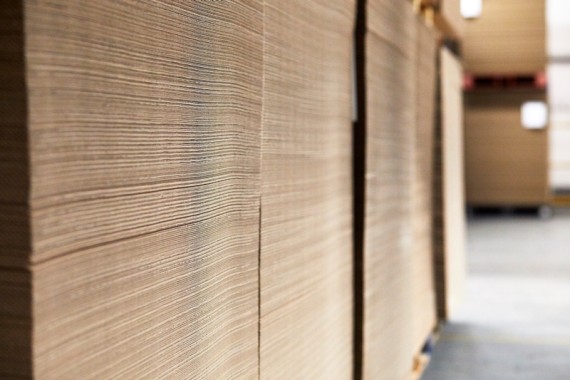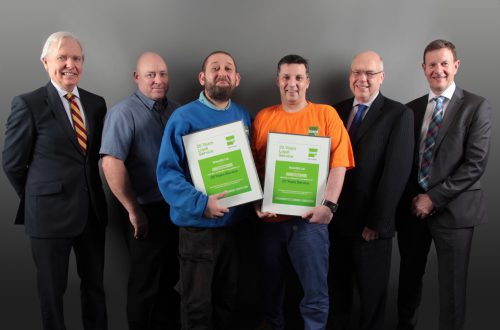Latest News

Towards the end of the last decade, packaging had been well and truly in the spotlight. As consumers and procurement directors alike began to consider the wider implications that non-sustainable packaging would have, the drive for change had already begun and gathered pace at a significant rate.
As such, the demand for environmentally friendly packaging continued to grow across B2B and B2C platforms to facilitate the growing public awareness and the perception of what they now deemed acceptable.
Gareth Stell, Logson Group Sales Director, gives a brief overview of how he expects the next ten years in packaging to evolve.
Packaging had never been in the spotlight as much as it had towards the end of the last decade and we expect this to remain the case going forward. It is however important to view the packaging industry as a whole and to find ways in which we can all work together to support the movement of goods, protect our products and our brands and find ways that fulfil consumer expectations now that awareness and demands have grown.
Therefore, we expect that the strongest trend will be the demand for sustainable packaging solutions, like ours, and that businesses and consumers will continue to elevate their principles regarding recycling and sustainability. The crackdown on Single Use Plastic (SUP) will undoubtedly continue; this is one issue that we have barely begun to scratch the surface on and for which there is potentially the biggest change ahead.
Whilst many businesses have made great head roads into eliminating SUP from their packaging supply chains, and plans are unquestionably in place to drive further changes and improvements from global brands and retailers; the shift has to be measured and on target. The correct research has to be done, new ways of doing old things have to be found and above all customer perceptions have to be managed. It is fair to say though that reducing plastic and finding sustainable packaging solutions is now at the forefront of packaging strategies for many a well-known brand.
In addition to sustainability considerations, ecommerce will continue to grow and will have an impact on the amount and type of packaging generated. It is of primary importance that we consider how this will be recycled as a 10% increase in the ecommerce sector was reported between 2018 and 2019 in the UK alone. We can probably expect that to be replicated and similar growth reported in the coming years. The packaging to facilitate this anticipated growth should be of an innovative design which could reduce material consumption, will help to manage distribution costs effectively to avoid shipping fresh air and ease the packing process to streamline supply and distribution channels driving efficiencies.
The ability for packaging to become ‘smart’ is also expected to be a trend that blooms in the new decade. Active Packaging is packaging which supports the functionality of the pack, for example assisting with moisture levels. By comparison, Intelligent Packaging can help to monitor shelf life, freshness etc of the product contained within and is beginning to emerge in sectors such as food and pharmaceutical with great success.
Such packaging solutions will allow marketers to keep up to date with customer trends and expectations, and these technological advancements will continue to drive innovation and improve the functionality of the way in which packaging is used.
Perhaps the way forward is to view packaging as a solution to deliver brand awareness, transport goods and engage with the end user. No longer can the quickest and cheapest solution be accepted as good enough, especially if its sustainability comes into question. It’s about using packaging to its full potential, using it responsibly and using it as a management tool for business to aid with research, product development and consumer profiling to make products and packaging even smarter than before.
For us it’s not just about a box. We have been actively encouraging existing and perspective customers to take a new look at the way they use packaging and how it sits within their brand and to ensure that functionality, cost, brand representation and sustainability are all treated with equal importance.
Choosing non-sustainable packaging communicates a lot about a brand and, as sustainability continues to be high on everyone’s agenda, this may prove to be a point of conflict.
We expect the demand for corrugated to continue to rise due to its environmental credentials, strength and durability and its ability to be innovatively designed. Indeed, The Big Carbon Debate, at Packaging Innovations in February, will showcase sustainable solutions and encourage everyone to see how they can work for them. Arguably, it’s as much about education as it is perception.
We will play our part in this by continuing to help minimise packaging through innovative functional design, focus on simple print that represents brands and information positively and a desire to showcase corrugated and paper based products as a game changer in packaging.
Corrugated has long had its place as a preferred packaging material and, with its suitability for supply chain solutions, ecommerce, FMCG, POS and RRP, the possibilities on what we can achieve together in the coming decade are huge.






